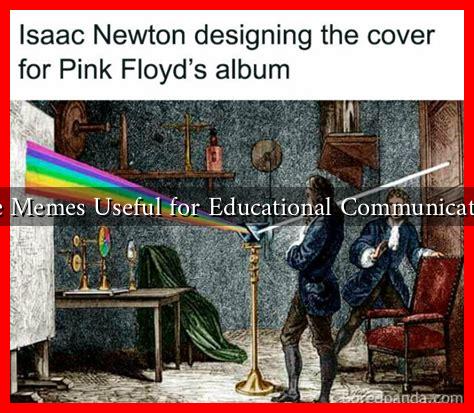-
Table of Contents
Are Memes Useful for Educational Communication?
In the digital age, memes have transcended their origins as mere humorous images shared on social media. They have evolved into a powerful tool for communication, particularly in educational contexts. This article explores the utility of memes in educational communication, examining their effectiveness, advantages, and potential drawbacks.
The Rise of Memes in Education
Memes are defined as cultural elements that spread virally, often in the form of images, videos, or text. Their rapid dissemination and relatability make them particularly appealing to younger audiences, including students. According to a study by the Pew Research Center, 55% of teens use memes to communicate with friends, highlighting their prevalence in everyday interactions.
Benefits of Using Memes in Educational Communication
Incorporating memes into educational communication can offer several advantages:
- Engagement: Memes can capture students’ attention more effectively than traditional teaching methods. Their humorous and relatable nature can make learning more enjoyable.
- Retention: Research indicates that visual aids enhance memory retention. Memes, being visual and often humorous, can help students remember complex concepts more easily.
- Accessibility: Memes can simplify complex ideas, making them more accessible to a broader audience. This is particularly useful in diverse classrooms where students may have varying levels of understanding.
- Encouraging Creativity: Creating memes can encourage students to think critically and creatively about the subject matter, fostering a deeper understanding.
Case Studies: Memes in Action
Several educational institutions have successfully integrated memes into their curricula:
- University of California, Berkeley: In a psychology course, professors encouraged students to create memes that illustrated psychological concepts. This not only enhanced understanding but also fostered a sense of community among students.
- High School Science Classes: Teachers have used memes to explain scientific phenomena, such as the laws of thermodynamics. By relating these concepts to popular culture, students found the material more engaging and easier to grasp.
Challenges and Considerations
While memes can be beneficial, there are challenges to consider:
- Misinterpretation: Memes can be easily misunderstood, leading to confusion rather than clarity. Educators must ensure that the intended message is clear.
- Inappropriate Content: The informal nature of memes can sometimes lead to the sharing of inappropriate or offensive material. Educators need to guide students on creating and sharing content responsibly.
- Over-Simplification: While memes can simplify complex ideas, there is a risk of oversimplifying important concepts, which may hinder deeper understanding.
Statistics Supporting the Use of Memes
Several studies have highlighted the effectiveness of memes in educational settings:
- A study published in the Journal of Educational Technology found that students who engaged with educational memes scored 20% higher on retention tests compared to those who did not.
- According to a survey conducted by Edutopia, 70% of teachers who used memes reported increased student engagement and participation in class discussions.
Conclusion: The Future of Memes in Education
Memes have proven to be a valuable tool for educational communication, offering unique advantages in engagement, retention, and accessibility. However, educators must navigate the challenges associated with their use to maximize their effectiveness. As digital communication continues to evolve, the role of memes in education is likely to expand, providing innovative ways to connect with students and enhance learning experiences.
In summary, when used thoughtfully, memes can transform educational communication, making learning more relatable and enjoyable for students. As we embrace this digital phenomenon, it is essential to strike a balance between humor and educational integrity, ensuring that memes serve as a bridge to deeper understanding rather than a barrier.
For further reading on the impact of memes in education, you can explore resources from Edutopia and the Pew Research Center.

